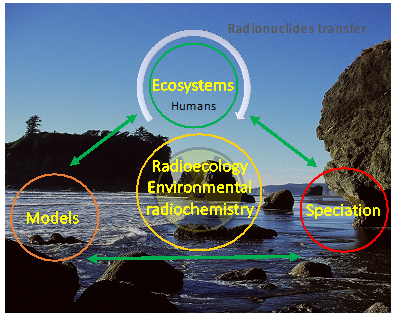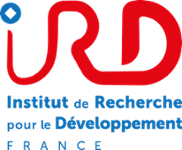Publié le 4 novembre 2022 – Mis à jour le 4 novembre 2022
Authors
Christophe Den Auwera, Maria Rosa Becciaa, Marie Yasmine Dechraoui Botteinb
a Université Côte d'Azur, CNRS, UMR 7272 Institut de Chimie de Nice, EUR Spectrum, Nice, France
b Université Côte d'Azur, CNRS, UMR 7035 ECOSEAS, EUR LIFE, Nice, France
I. Positioning [1]
In the context of climate change and the goals established in the 2015 Paris Agreement, nuclear power has been identified as a viable alternative (although not unique) to the use of fossil fuel-based energies.[2] This, of course, has and will raise social, political and scientific concerns over an eventual accident or misuse of nuclear power, legacy, long-term management of waste and the possible impact on the environment. Although exposure to radionuclides and radiation does not constitute a day-to-day issue of public health, concerns become more acute in the case of a nuclear event or a deficiency in waste management and the possibility of exposure raises constant questioning from society and underlines the need for information and scientific input.The three major civilian accidents of Three Mile Island, Chernobyl and Fukushima in March 1979, April 1986 and March 2011, respectively, contributed significantly to the need to assess the impact of radionuclide release in the environment. At the same time, remediation technologies have always been a challenging operation, since they are highly dependent on the physical and chemical history of the site under consideration. Finally, the legacy of historical nuclear storage and test sites such as Mayak in Russia, Sellafield in UK or Hanford in the USA (not exhaustive) also contributes to radionuclide dissemination. These factors, in addition to the general, social and political concerns on environmental impact, continue to drive fundamental scientific questions regarding any further accidental release of radionuclides on the Earth’s surface.
Most studies in radioecology and environmental radiochemistry have intended to inventory as well as assess the fate and impact of minus levels of radionuclides in specific compartments (e.g., minerals, sediments, water, plants, organisms). This approach enables monitoring of the transfer and accumulation momenta at very large scales, however, it often fails to describe the chemical form of the element in question due to the very low levels of radioactive elements. Therefore the chemical reactions at the molecular level remain hardly decipherable because it is technically impossible (due to large dilution factors) to assess direct speciation. From the IUPAC gold book, speciation is defined as the "distribution of an element amongst defined chemical species in a system".[3] In consequence, not only the quantity (the dose) but also the chemical form (speciation) are essential input data. [4] Despite those limitations, attempts to better understand the migration and accumulation transfers to the environment and ecosystems have raised further questions.
Since the beginning of environmental radiochemistry research in Nice in 1980, the approach has shifted over time from pure radioecology to a radioecology combined with environmental radiochemistry and even biochemistry. The major difficulty in achieving this goal is to combine two orthogonal scales: the ultra-trace concentration scale on the one hand (in atoms per volume or surface units) and the large spatial heterogeneities of the field on the other hand (in length units).
II. Environmental (marine) studies with radionuclides
On one hand, the environmental chemistry of radionuclides refers to the chemical study of Metallic Trace Radionuclides in environmental systems. On the other, radioecology is a subdivision of ecology that "emerged as a scientific discipline at the end of World War II, in response to environmental problems from radioactive fallout associated with nuclear weapons testing".[5] This historical view of radioecology seems to exclude, although by omission, possible effects of natural radioactivity (radiations) on ecosystems. During the first decades after World War II, radioecology studies were driven by the study of the impact of nuclear radiation and transfer of radionuclides to ecosystems.As

In short, the environmental chemistry of radionuclides and radioecology are distinct but complementary approaches that may overlap in some cases in their goal to study the impact of Metallic Trace Radionuclides and their radiation on ecosystems (which may or may not include humans). The main factors under consideration are the radionuclide (its chemical and radiation properties), the object of interest (environmental compartments, biotopes, living species, humans included or not, dose-effect relationships at the individual organism level), and its concentration scale.
Since 2011 at ICN and in collaboration with CEA (Commissariat à l'Energie Atomique) Ile de France, we have focused our research on the study of radionuclides in the marine environment, a key compartment of the hydrosphere. The hydrosphere covers the majority of the earth’s surface and is a primary source of biodiversity. It can be defined as the surface on the earth that is occupied by water or ice (and snow). Hence, seawater represents the largest proportion of the hydrosphere (ca. 96.5%) and covers by itself about 71% of the earth’s surface. Ice caps, glaciers and permanent snow are the second compartment with about 1.74% of total water on earth while other sources of fresh water represent only 1.76% of total water. [7] As a consequence, oceans act as a long-term repository for pollutants such as organics, heavy stable metals or radionuclides. Oceans can also be considered as the ultimate receptacle of rivers and catchment areas. In seawater, the accumulation of several heavy metals in marine organisms has been widely studied at all trophic levels. For this reason, the marine environment has often been monitored as a pollution landmark.
Considering this focus on the marine system, our approach certainly deviates from a methodology based on pure inventories, because we are looking for pathways for studying speciation in living systems. This way we are considering Metal Trace Radionuclide contamination in marine species as a complement to current radioecological approaches.
We have considered sentinel marine species of local pollution because of their sedentary habits and well-known sensitivity to pollutants. Possible sentinel marine species that are easily handled at a laboratory scale are sea urchins (echinoderm) or mussels (bivalve). Mussels are for instance the subject of an international program (the Mussel Watch Program) on metallic trace element accumulation. [8] We investigated for instance the biochemical reactions that are responsible for the uptake of some Metal Trace Radionuclides (Nat-U, 60-Co, 137-Cs) with sea urchin Paracentrotus lividus using a well-controlled system of aquaria contaminated with the Metal Trace Radionuclides of interest. [9] For Nat-U for instance, using X-ray spectroscopic techniques combined with analytical techniques, we provided evidence of the metabolization of uranium in living P. lividus. [10] The accumulation rate of uranium found in the digestive tube is almost 3 times and 10 times higher than in the gonads and the shell and spines, respectively. We have also determined one of the target proteins that could bind uranium within those organs. These data clearly highlight the necessity for speciation investigation in each compartment separately, as the accumulation rate of uranium is radically different between the three compartments.
III Concluding remarks
Ultra-trace levels of contamination in the environment often preclude the use of spectroscopic techniques and the determination of direct speciation data. Heterogeneity at various scales also requires adapting the size of the probe to the size of the sample. This always questions the representativeness of the measurement. Those two limiting conditions (ultra-trace environmental levels on the one hand, and heterogeneity on the other) have up until now formed the bottleneck of speciation studies. In our effort to input speciation data in environmental (and radioecological) metrics, we have developed a methodology consisting of laboratory exposures in a controlled environment that tries to fill this methodological gap. Our recent work on marine species uses this approach which overlaps radioecology and environmental radiochemistry. The major limitation is certainly the validation of representativeness for real contaminated ecosystems. For that purpose, care should be taken to complement such approaches with field data, as much as possible.In conclusion, obtaining speciation data calls for a methodological compromise. Nevertheless, the input data so gathered is essential and can impact calculation codes developed on a larger scale.
References
- This article is largely inspired from the article of Den Auwer et al. in ChemPlusChem, 2022, 87, e202200108
- Climate Change and the Role of Nuclear Power, Proceedings of an International Conference, Vienna, Austria, 7–11 October 2019, Proceedings Series - International Atomic Energy Agency, 2020
- IUPAC gold book, https://goldbook.iupac.org, Jan. 2022
- J. N. Wolfe, in Radioecology: Proceedings of the First National Symposium on Radioecology Held at Colorado State University, Fort Collins, Colorado, September 10-15 1961, Reinhold Publishing Corporation, 1963
- O.E. Rhodes Jr. et al. Science of the Total Environment, 2020, 740:140031
- ICPR organization, https://www.icrp.org/index.asp, January 2022
- USGS data compiled and provided by the US Geological Survey, www.usgs.gov
- J. Beyer, N. W. Green, S. Brooks, I. J.Allan, A. Ruusa, T. GomesaInger, L. N.Bråte, M. Schøyen, Marine Environmental Research 2017, 130, 338
- MBARI, www.mbari.org. See resources online from Monterey Bay Aquarium Research Institute.
- B. Reeves, M. R. Beccia, P. L. Solari, D. E. Smiles, D. K. Shuh, L. Mangialajo, S. Pagnotta, M. Monfort, C. Moulin, C. Den Auwer, Environ Sci. Technol. 2019, 16, 7974-7983















